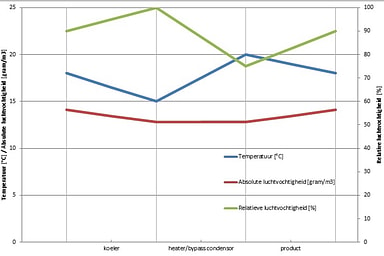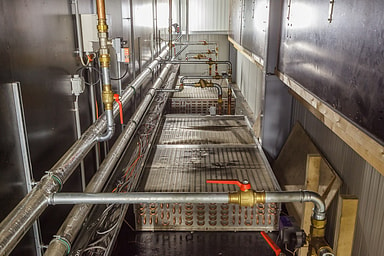Condensation Drying
Condensation drying is the method for drying both now and in the future.
The image above is an example of the condensation drying process.
When drying constantly depends on the weather conditions and preserving the quality of the product is paramount, a condensation drying unit is a clever purchase. An additional module enables the condensation drying to be applied to the current indirect cooling system from Tolsma-Grisnich.
In condensation drying, the moist air is sucked through the evaporator and cooled, condensing and removing the moisture in the air. By reheating the cooled air (with the heat released during the cooling process), the moisture is reabsorbed into the air. The application of condensation drying dries the product faster, prevents fungal growth and ensures that the quality of the product is preserved. Another significant advantage is the reduction in gas costs. It is even more interesting for companies that generate their own energy.
The advantages of condensation drying:
- Improved product quality
- Continuous drying
- Energy-efficient drying, runs entirely on electricity
- Drying is not weather dependent
- Tax benefits are also possible via the EIA (Energy Investment Allowance) Scheme.

